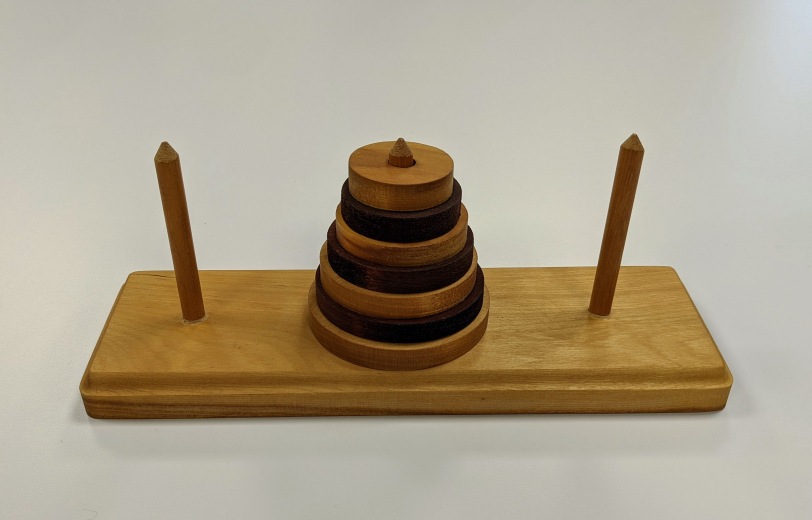Natural Numerical Tower Foundations
Hemlock is a systems programming language that has to be capable of integration with languages like
C and
Fortran. More generally, Hemlock needs to be capable of
utilizing the various numerical representations for which the computer provides native
implementations. For integers that means at least signed/unsigned 8/16/32/64-bit integers. Hemlock
uses a uniform naming scheme for these: u8, u16, u32, u64 (aka uns), i8, i16, i32,
and i64 (aka int). But Hemlock doesn’t stop there because there are various practical uses for
wider integers. For example the built-in hashing currently uses u128, and will use u256 once we
convert from MurmurHash3 to
BLAKE3. We chose to support through u512/i512 in
service of e.g. SHA3-512, leaving the door open for even
wider integers as practical need arises. However, no matter how wide we go with fixed-width integer
types, there are situations in which we need even more precision for intermediate computations. This
is where the nat and zint types come in.
All of Hemlock’s fixed-width integer types have well-defined modular
arithmetic semantics, which means that their
number lines wrap around. For example, if we decrement 0u8, the result is 255u8. This is of
course not the case for the nat (ℕ₀) and zint
(ℤ) types, which have infinite bounds. The only danger zone
is nat subtraction. For example, Nat.pred 0n halts, because the result is outside the domain of
ℕ₀.
The nat and zint types provide a, shall we say, natural foundation for Hemlock’s integer
numerical tower. The Scheme language
has a magnificent numerical tower for which
integers are only the top of the tower, but similar concepts apply to Hemlock’s integers. u8
values can always be exactly converted to wider unsigned types, but the converse is not true. Things
get a bit trickier in the context of signedness. u8 cannot necessarily be exactly converted to
i8, but i16 and wider work fine. And i8 cannot necessarily be exactly converted to any
unsigned type. The resulting numerical tower has a consistent, if surprising structure. Every
source/target pair for paths through the directed graph corresponds to
total conversion from the source type
to the target type; any other conversion is
partial and may fail.
An easier way to only get correct answers
Let’s go back to the claim that we always need more precision than the widest fixed-width integer
type. Suppose we only had u8 in Hemlock and our compiler was incrementally computing the value of
235 while scanning the digits. These incremental computations would conceptually look something
like the following happy case.
open U8
u = 2u8 # Scan '2' -> 2
u' = u * 10u8 + 3u8 # Scan '3' -> 23
u'' = u' * 10u8 + 5u8 # Scan '5' -> 235
All is well and good, but suppose the input is 267 (multiplication would wrap) or 257 (addition
would wrap). Now we have to check every intermediate result for wrapping in order to detect an
out-of-range input! The control flow and multiplication overflow detection are finicky enough that
I’m not going to bother showing any details here; just use your imagination to replace every * and
+ with a chain of functions that do tricky overflow detection. Now contrast that with a
nat-based approach.
open Nat
u = 2n # Scan '2' -> 2
u' = u * 10n + 3n # Scan '3' -> 23
u'' = u' * 10n + 5n # Scan '5' -> 235
result_opt = U8.narrow_of_nat_opt u''
Ah, blissful simplicity — all the overflow detection happens in one place! This same general
approach works well in a variety of contexts. Take a problem similar to the Nat.pred 0n example
above.
# Imagine `n0` and `n1` are dynamically computed.
n0 = 0n
n1 = 1n
z = Zint.((Nat.bits_to_zint n0) - (Nat.bits_to_zint n1))
result_opt = Nat.like_of_zint_opt z
zint serves as a nexus type here, whereas nat was sufficient for the earlier example. Depending
on context, even fixed-width types may serve as a nexus type, though care is required when choosing.
For example, a single u64 multiplication can use u128 as the nexus type, but even two
multiplications may overflow u128.
As shown earlier, this isn’t the only way to deal with overflow, but it’s an awful lot easier to
work with in practice. Hemlock pays the one-time complexity cost of implementing nat and zint,
and reaps the innumerable simplification benefits in Hemlock application code.


